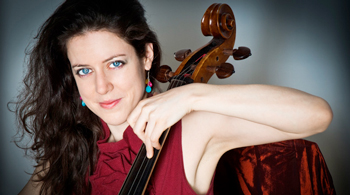by Mike Telin

On Saturday, January 21 at 8:00 pm at 2731 Prospect Gallery, Les Délices will present “Mozart in Paris.” The program, which marks the ensemble’s first full concert featuring music from the Classical era, will include Mozart’s Quartet for Oboe and Strings, quintets by Luigi Boccherini and Christoph Willibald Gluck, a string quartet by Giuseppe Cambini, and an etude by renowned French cellist Jean-Louis Duport. The program will be repeated on Sunday, January at 4:00 pm at Herr Chapel in Plymouth Church. In addition to Nagy, performers include violinists Julie Andrijeski and Beth Wenstrom, violist Cynthia Black, and cellist Elinor Frey.
The program will also mark Les Délices artistic director Debra Nagy’s first performance of Mozart’s Oboe Quartet on a period instrument. “I’ve played it on modern oboe, but never on a ‘classical’ instrument,” Nagy said. “I’m looking forward to it. The piece is so full of unabashed joy. But it does venture into the extreme high register of the instrument with four high F’s.”
In addition to Mozart’s “bad attitude” during his stay in Paris, some tragic circumstances didn’t help matters: his mother, who accompanied him on the trip, died. Nagy points out in her program notes that Mozart, being a patriotic German, openly antagonized the French and offended patrons with his refusal to heed social etiquette. He blamed his inability to do the necessary networking on the fact that Paris was too large, too filthy, and too expensive to get around. He also regularly insulted his colleagues, who might otherwise have championed his music.
Another bit of musical history taking place at the time of Mozart’s visit to the City of Lights was the fondness the Parisians had developed for the cello — by the time he arrived it had become an instrument that excited professional and amateur players alike. “While Paris obviously had a strong musical tradition, it was one of the last places where the instrument became popular,” Montréal-based cellist Elinor Frey said during a telephone interview. “Traditionally a gamba or viol was used together with the cellos to play the bass parts in ensembles like Lully’s orchestra. But gradually Parisian musicians began to discover the potential of the cello as some of its first virtuoso players passed through the city. Soon cellos began to appear on concert series such as the Concert Spiritual. Paris was also a big publishing center and almost all of Luigi Boccherini’s music was published there.”
Although Frey had played early music during her undergraduate studies, she never considered pursuing it as a career until around 2008, when she began seeking new directions. “That was when I began to think about Baroque music, and the origins of the cello. I knew that it all started in Italy, and since I love Italian culture, I wanted to create a long project that would have a relationship to Italy.”
Having always been interested in history, and realizing that her academic side and her cello side could go together, Frey applied for and received a Fulbright Fellowship to go to Italy, where she studied Baroque cello with Paolo Beschi. During that year-long project, Frey investigated how the cello evolved over time. “During that process, I became so wrapped up in learning about the history of my instrument that I became a Baroque cellist, and have been one ever since.”
Frey noted that the first work published for an instrument called violoncello came in 1689 in Bologna. “That was Domenico Gabrielli’s Seven Ricercare for Violoncello, although the same instrument could have been called something else in a neighboring town. Trying to figure out which instrument people are talking about has led to many debates on the subject,” she said. “Those center around the question of what the violoncello is. How was it shaped, how many strings did it have, how was it tuned, and how were the instrument and the bow held? And when it was used with other instruments, what role did it play? For example, if a score says ‘violone,’ is that the same instrument as the violoncello? There are so many questions to which there is no single answer.”
When asked to give her thoughts as to why Mozart never wrote a cello sonata or concerto, Frey said, “He would have interacted with the Italian cellists who were living in Paris. There were plenty of megastar cellists around him, but maybe they just didn’t catch his attention the way pianists, violinists, and singers did.”
Published on ClevelandClassical.com January 17, 2017.
Click here for a printable copy of this article



